Today, I finally got to fish my Nissin Prosquare rod I recently got from Japan. While I wasn’t sure what to expect, at the end of the day, I was pleasantly surprised.Like many low to mid priced rods in Japan, the Prosquare comes in plastic packaging with a nylon rod sack and no tube. This is fine with me since I consider tenkara rods to be self contained and never use the tube anyway. To me, the tube is superfluous and I’d rather see rods come in at cheaper retail prices by forsaking the unnecessarily bulletproof tubes.
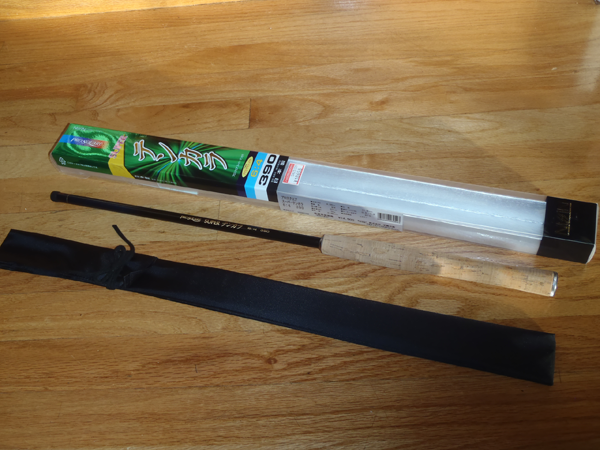
The Prosquare is a 390 cm (approx. 13 ft.) rod with a 6:4 action.
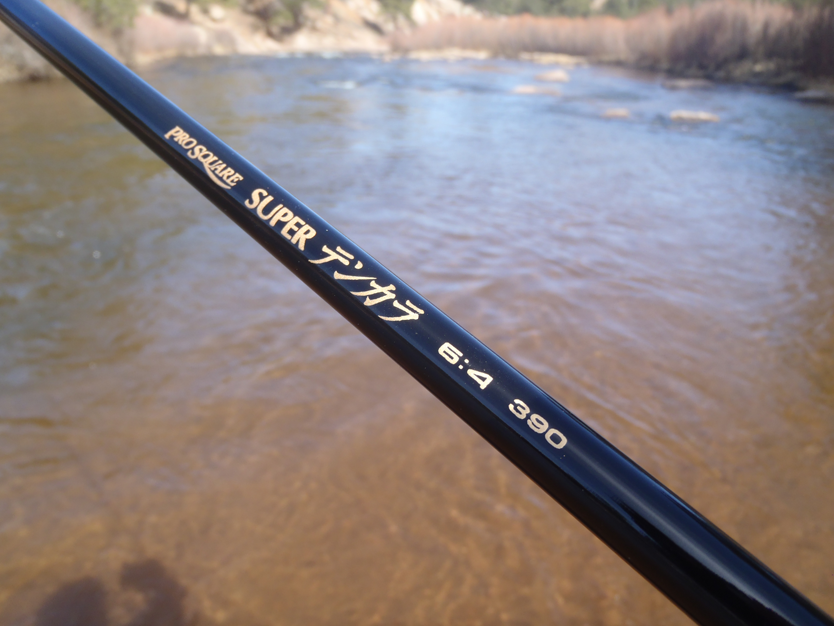
I wouldn’t whistle at the aesthetics but they’re certainly not ugly. The black blank with blue accents and gold writing is elegant in its own spartan way.
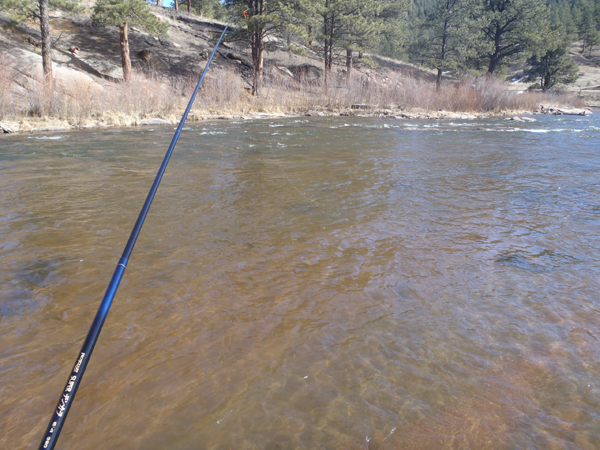
I really like the action of this rod. While it’s rated a 6:4, it felt more like a Tenkara USA Ayu 5:5 in the hand. The tip is just soft enough to load the line well, yet you still know you are fishing a true 6:4. I fished it with the new 3.5 Tenkara USA yellow level line (13 ft.) and felt it was a good fit.
The handle is a good length and the quality of the cork is great. The end cap is knurled aluminum with a drain hole (nice touch).
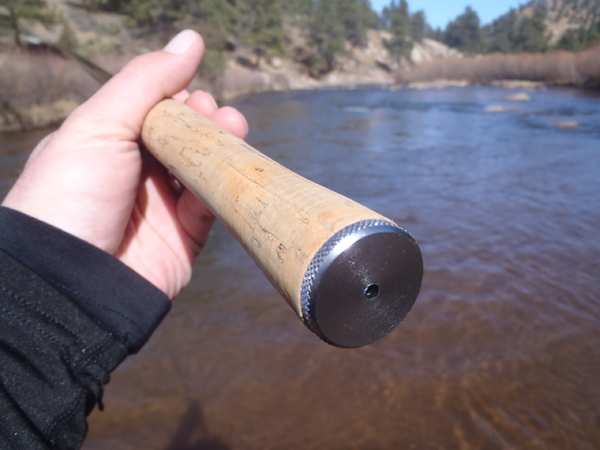
Another little detail I like about this rod is the rod plug. While not as cool looking as the wooden plugs of other rods such as Tenkara USA, this rod plug is entirely rubber and has a snug fit that ensures against loss.
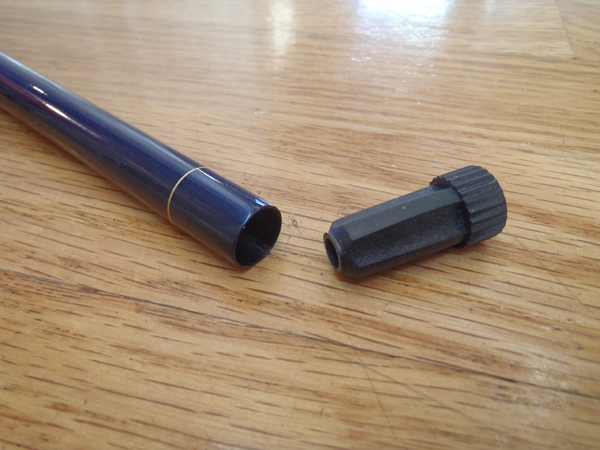
Overall, this is a great rod and I’m glad to have it in my arsenal but I don’t think it overshadows anything you can more easily get from Tenkara USA right now. For about the same price point, I’d probably recommend getting the Ayu and save yourself the headache of trying to get one from Japan. I guess it’s just nice to confirm that we can get “real” tenkara rods here and reinforces the fact that Daniel has done his homework (that we can all cheat off of, LOL).


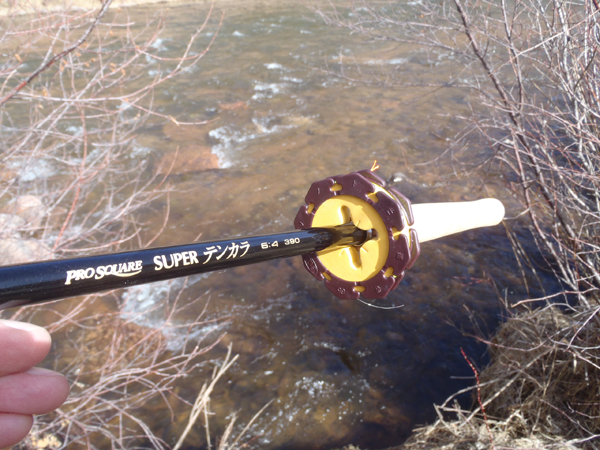






The plug for the Nissin is a nice touch — you can use it with EZ Keeeps and not worry about the plug scissoring the line. The same is not true of my T-USA plugs. The plug that came with my Amago is not too bad (only medium hard), but the plug with my Ayu is hard plastic and I detach my line from the lillian before using that plug.
How easy for the maker to incorporate those “line slots” on the side of the plug. With those, the plug could be made of metal and you’still not worry about line damage. I notice from T-Bum’s site that the plug in his his Daiwa rod pictures has the same line slots (T-Bum calls it fluting, a more elegant description of the same thing).
One wonders when these Japanese rods will be more widely available in the USA. “When there is enough demand” is likely the answer to that. With that in mind, I sure hope T-Bum does well with his Daiwa sales.
Do you have a ballpark guess as to what the Nissin would cost in the USA if imported by a dealer here? Less than the Ayu? More than the Stone Fly?
Paul,
In Japan this rod is about $232. I got a discount so I only paid $162. Even low and mid range rods are more expensive in Japan so I’m not sure how well they’d do here. This fact makes Tenkara USA rods a great deal.
You can order this rod online from Japan. It cost 13000Yen ($162). Just do a google search for “PLAT”.
Jason,
I just received the 320cm version of this rod. I’ve only cast it so far, but I like it. I noticed that the handle is actually a synthetic foam with a very thin cork veneer over it. It feels really nice but I wonder how it will wear. Have you noticed any ill effects on yours so far?
-Mike
Whaaaah? Mine is definitely not synthetic–it’s real cork (and really nice cork at that). Did they change the design?
They must have. I’ll take some pictures later if you’re curious, but I’ll try to explain it. When you handle the rod it’s cork, filler and everything. But if you look at the winding check or if you take the bottom cap off you see that it’s really a dense foam of some sort and that the cork that you see and touch is actually a veneer.
Mike, just opened up my end cap and mine is cork all the way to the blank. No veneer. Would be curious to see your pics.
I’ve emailed you a couple photos since I don’t think you can post them in comments.
Bringing up an older review but do you still have this and compared to the newer rods you have tried any new thoughts on this rod?
Hi Craig, the Prosquare is still one of my favorite rods. That and the Ayu and Ito are my top 3 right now.
Thanks you don’t have the pics from MIkeB showing his wasn’t a full cork handle do you?
Hi Craig. I don’t think he ever sent them, sorry.
I had thought I sent them that night, but perhaps not. I’ll send them now.
No problem, one last question do you like the over all feel and balance in hand? I always thought the Ito felt tip heavy what are your feelings on this one? Thanks for your time and reviews, I’m contemplating the Nissin and looking for all the info I can on it.
Craig
Hi Craig, yes. In fact the feel and balance is one of the things I love most about the Prosquare (aside from action). I recommend the rod 100%. To me the Ito only feels tip heavy when it’s fully zoomed out. In 13 ft. mode I think it feels light and balanced. So I usually fish it in 13 ft. and only zoom it out when I need the extra distance or hook a fish.
My Prosquare 320 from Japan just arrived. A whole lot prettier than I imagined, feather light and has a beautiful “smile on my face” action. This is my first “real” Tenkara rod besides my Soyokaze, so I expect to be wow’d even more in the future. My 320 handle is foam as well and has a hard squishy feel. I haven’t taken the plastic off and can’t testify to the cork veneer, but I don’t see how that’s possible. I’m betting it’s all fake and not cork. Mike B, what’s your line weight preference with this rod?
Guys a quick question about the Nissin pro-spec 2 way if anyone has it. And yes my pro spec has a cork veneer and foam core. Question is on the zoom section their is a rubberish material at the end of the section that provides friction when the section is retracted in shorter mode and other end firmly rests against the butt cap. Does the rubbery part supposed to recess into the rod or should it be outside and VISIBLE when the rod is retracted?